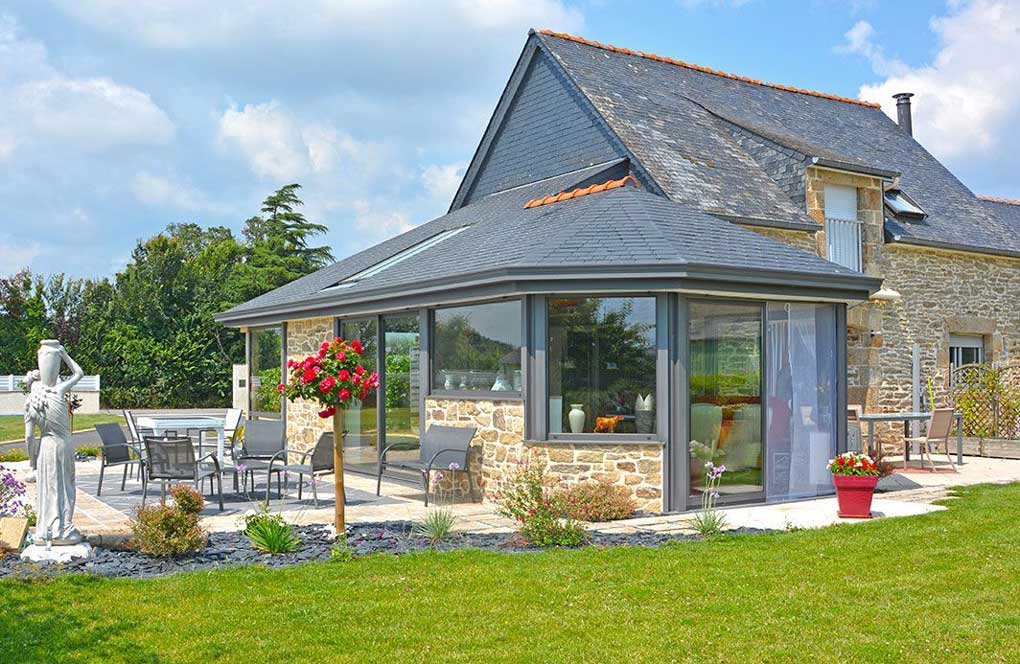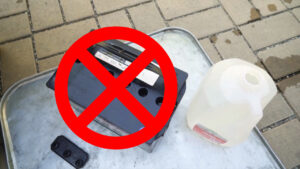Gable roofing is one of the most common options for residential buildings. It offers a number of advantages, such as better ventilation, traditional aesthetics and easy drainage of rainwater. However, this configuration also has its drawbacks, notably in terms of cost, maintenance and loss of interior space.
01 INSTALLATION VIDEOS GERARD ROOFING SYSTEMS EUROPE - ROOF UNDERSTRUCTURE (A)
[arve url="https://www.youtube.com/embed/BjexBYE-8Xg "/]
What's the strongest roof?
The strongest roof is generally considered to be made of concrete tiles or slate. These materials offer excellent resistance to weather, high winds and hail. What's more, they have a longer lifespan than other types of roofing, such as shingle or sheet metal.
Concrete roof tiles are renowned for their robustness. They are made from cement, sand and water, giving them great structural strength. They can easily withstand storms and temperature variations.
Slate roofs are also extremely durable. Slate is an extremely durable and resistant natural material. It can last for many decades without the need for major repairs. What's more, slate offers an elegant, timeless aesthetic to any home.
It is important to note that the strength of a roof also depends on the quality of installation and regular maintenance. It's advisable to call on qualified professionals for the installation and maintenance of your roof to guarantee its durability and resistance to climatic conditions.
What is the average lifespan of a roof?
The average lifespan of a roof depends on a number of factors, such as the material used, weather conditions and regular maintenance. In general, a well-maintained roof can last between 20 and 50 years. Slate and tile roofs tend to have a longer lifespan, exceeding 50 years, while asphalt shingle roofs have an average lifespan of around 20 to 25 years.
However, It's important to note that these figures are only estimates, and that certain circumstances can shorten a roof's lifespan. Extreme weather, storm damage or unrepaired leaks can significantly reduce a roof's durability. That's why we regular maintenance and professional inspections are essential to a roof's longevity.
We recommend that you inspect your roof at least once a yearIf you notice any signs of aging, such as deteriorating or loose shingles, water leaks or moss build-up, it's best to call in a professional to assess the situation. What's more, if you notice signs of aging such as deteriorating or loose shingles, water leaks or moss build-up, it's best to call in a professional to assess the condition of your roof and carry out the necessary work.
In conclusion, the average lifespan of a roof varies according to a number of factors, but by taking good care of your roof and carrying out regular repairs, you can prolong its durability and avoid bigger problems in the future.
Why is zinc roofing preferable to iron?
Zinc roofs are preferred than iron roofing for a number of reasons. Firstly, zinc is a highly resistant and durable material, making it an ideal choice for roofs that have to cope with the elements and varied climatic conditions. It's also lightweight, making it easy to install and reducing the load on the building structure.
Zinc also has good sealing propertiesThis makes it ideal for protecting the home against water infiltration. This is particularly important in areas where rainfall is heavy or where there is a risk of leaks.
What's more, zinc is an environmentally friendly material because it can be recycled at 100%. Its manufacture does not require much energy, so it is considered environmentally friendly.
Finally, zinc roofs offer attractive aesthetics. Their high-gloss finish and silvery-gray color give the roof a modern, elegant appearance, contributing to the aesthetic enhancement of the home.
In conclusion, zinc roofs are preferred to iron roofs for their strength, waterproofing, durability, aesthetic appeal and environmental friendliness.
What type of roof for a low-slope roof?
When it comes to choosing a low-slope roof, there are some key factors to consider. A low-slope roof is generally defined as having an inclination of less than 20 degrees. In this case, It's advisable to opt for specific materials that guarantee watertightness and prevent water from accumulating on the roof..
The most common types of roofing used for low slopes are..:
1. Modified bitumen roofing (or SBS): This type of roofing is composed of sheets of thermoplastic polymer-modified bitumen membrane. This method offers good weather resistance and reliable waterproofing.
2. EPDM roofing: EPDM is a synthetic rubber material that offers excellent resistance to UV and extreme weather conditions. It is often used for flat or low-slope roofs.
3. PVC roofing: PVC is a durable and resistant material, ideal for low-slope roofs. It is also available in a variety of colors and finishes to suit different architectural styles.
4. Metal roofs: Metal roofs are also a popular option for low slopes. They offer long service life, weather resistance and can be particularly suitable for climates with heavy rainfall.
It is important to note that the installation of a low-slope roof must be carried out by qualified professionals to ensure correct installation and optimum performance.
In conclusion, gable roofing has both advantages and disadvantages. On the one hand, it offers a traditional, classic aesthetic that can add charm to any home. What's more, its sloped design allows rainwater to drain efficiently, reducing the risk of leaks and structural damage.
On the other hand, gable roofing has a few disadvantages. Firstly, its construction can be more complex, requiring extra time and cost compared with other types of roofing. What's more, the slopes can limit the interior space in the attic, making it less practical or reducing storage potential.
Ultimately, the choice of a gable roof will depend on the homeowner's aesthetic preferences, the configuration of the house and budgetary considerations. It's also important to consider the regular maintenance required to maintain the roof's integrity and prevent potential problems.
So it's essential to take the time to carefully weigh up the pros and cons before deciding which type of roof is best suited to your new-build or renovation project.








